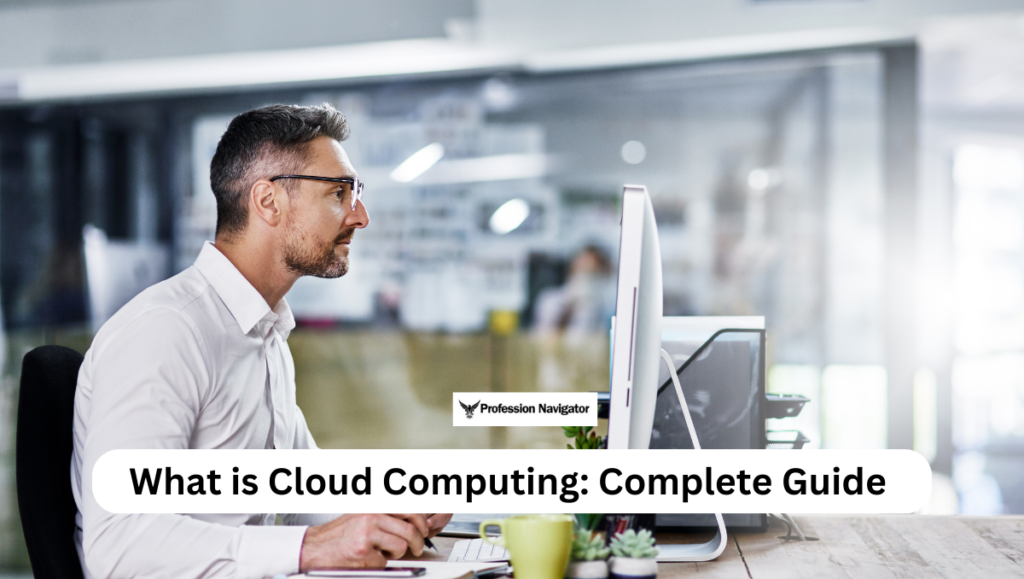Cloud computing is a model for delivering computing services over the internet, providing access to resources such as servers, storage, and applications on demand. It has revolutionized IT operations by offering flexible and scalable solutions.
Definition and Concept
Cloud computing enables users to access computing resources without the need for direct management of physical infrastructure. This approach supports the dynamic allocation of resources and enhances operational efficiency.
Read also: software engineer jobs in the UK
Table of Contents
Significance and Application Areas
In today’s digital landscape, cloud computing empowers organizations to innovate rapidly, reduce costs, and improve productivity. It supports diverse applications across industries, facilitating remote work and digital transformation.
Evolution and Development of Cloud Technology
Originally focused on virtualization and resource pooling, cloud technology has evolved with advancements in networking, security, and automation. It now includes specialized services tailored to specific business needs.
Read also: skilled worker visa in the UK
Industry Impact of Cloud Solutions
Cloud computing has disrupted various sectors, enabling global scalability, enhanced customer experiences, and data-driven decision-making. It fosters innovation and agility, driving competitive advantage in a digital economy.
Types and Categories
Cloud computing encompasses multiple deployment models and service types that cater to different organizational requirements and preferences.
Public, Private, Hybrid, Community, and Multicloud Models
These models offer varying levels of control, security, and scalability to organizations. Public clouds are accessible to multiple users over the internet, while private clouds provide dedicated resources for single organizations. Hybrid, community, and multi-cloud models combine different deployment approaches to optimize performance and flexibility.
Benefits of Cloud Computing
Cloud computing delivers numerous advantages that support its widespread adoption and use across industries.
Scalability, Cost Efficiency, Flexibility, Accessibility, Security
Cloud services enable organizations to scale resources up or down based on demand, reducing upfront investment in hardware. They offer predictable operational costs, flexible deployment options, remote accessibility, and robust security features.
Challenges and Limitations
Despite its benefits, cloud computing presents challenges that organizations must address to maximize its effectiveness and mitigate risks.
Security, Data Privacy, Reliability, Integration Issues
Security concerns, data privacy regulations, service downtime, and integration complexities are key considerations for cloud adopters. Addressing these challenges requires implementing robust security measures, ensuring compliance with data protection laws, monitoring service reliability, and planning for seamless integration with existing IT systems.
Technical Specifications of Cloud Computing
Cloud computing services are categorized into distinct models that provide varying levels of abstraction and management for computing resources.
Infrastructure as a Service (IaaS), Platform as a Service (PaaS), Software as a Service (SaaS), Serverless Computing
These models offer scalable infrastructure components, development platforms, software applications, and serverless environments respectively. They empower organizations to focus on application development and business innovation without managing underlying infrastructure.
Applications
Cloud computing supports applications and use cases across industries, transforming how businesses manage IT resources and deliver services.
Storage, Backup Solutions, Development Environments, IoT, and Edge Computing
Cloud-based storage and backup solutions ensure data availability and disaster recovery. Development environments streamline software development and deployment processes. IoT and edge computing leverage cloud scalability and real-time processing capabilities for distributed data management and analytics.
Latest Innovations
Recent advancements in cloud technology have introduced new capabilities and enhanced performance across diverse domains.
AI and Machine Learning Integration, Serverless Architecture Advancements, Quantum Computing Utilization
Integrating AI and machine learning enhances predictive analytics and automation capabilities in cloud services. Serverless architectures improve resource efficiency and application scalability. Quantum computing exploration in cloud environments promises advancements in computing power and algorithm optimization.
Future Prospects of Cloud Computing
The future of cloud computing is poised for further innovation and integration with emerging technologies, offering new opportunities for organizational growth and efficiency.
Edge Computing and Cloud Integration, Blockchain Technology Adoption, Predictive Analytics Expansion
Edge computing enhances real-time data processing capabilities by integrating with cloud services. Blockchain technology introduces enhanced security and transparency in cloud transactions. Predictive analytics expands data-driven insights and decision-making capabilities, driving competitive advantage and operational efficiency.
Comparative Analysis: Cloud Computing vs. Traditional IT Infrastructure
Comparing cloud computing with traditional IT infrastructure highlights differences in cost-effectiveness, performance scalability, and security management.
Cost, Performance, and Security Comparisons
Cloud computing reduces upfront capital investments and operational costs while offering scalable performance and robust security measures. In contrast, traditional IT infrastructure requires significant hardware investments and ongoing maintenance efforts.
User Guides and Tutorials for Cloud Computing
Guides and tutorials provide practical instructions for implementing and utilizing cloud computing solutions effectively.
Implementation, Setup, and Usage Instructions
These resources assist users in setting up cloud services, configuring environments, and optimizing resource utilization for enhanced operational efficiency.
Conclusion on Cloud Computing
In conclusion, cloud computing revolutionizes IT operations by offering scalable, cost-effective, and flexible solutions that empower organizations to innovate and grow.
Summary, Future Trends, and Adoption Recommendations
Understanding the benefits, challenges, and technical specifications of cloud computing is crucial for organizations considering adoption. Embracing cloud solutions can drive digital transformation, enhance competitiveness, and foster sustainable growth in a rapidly evolving digital landscape.



